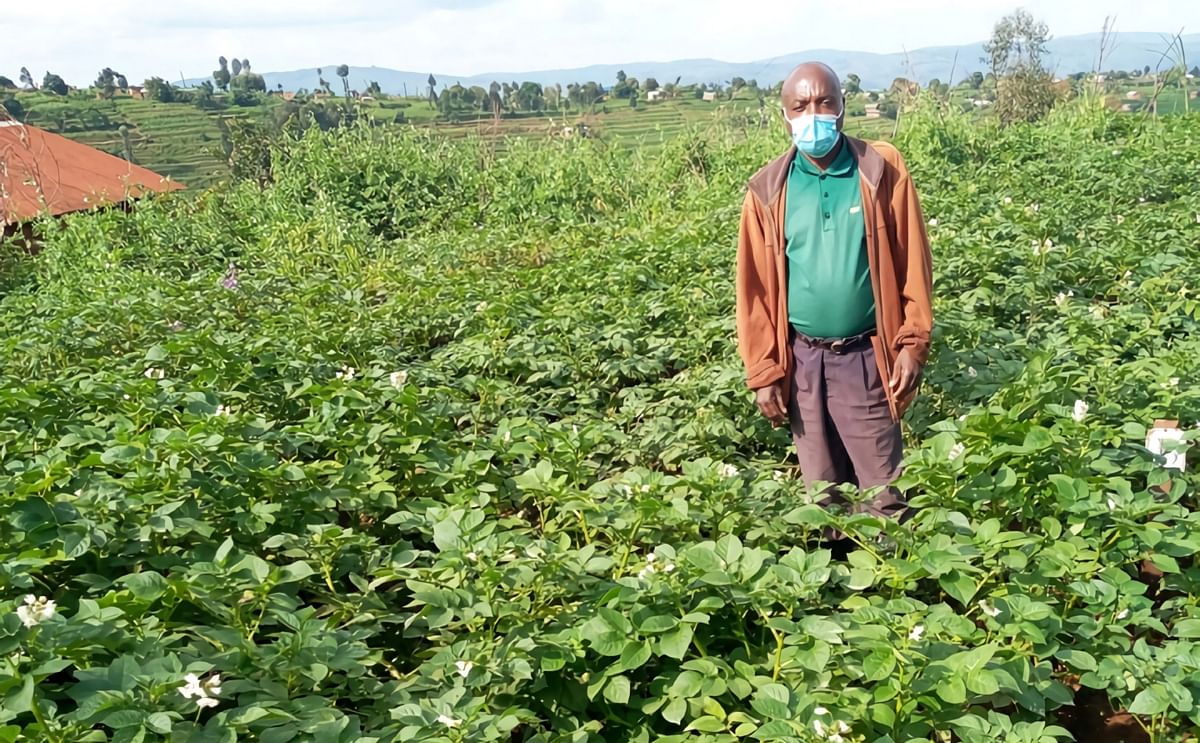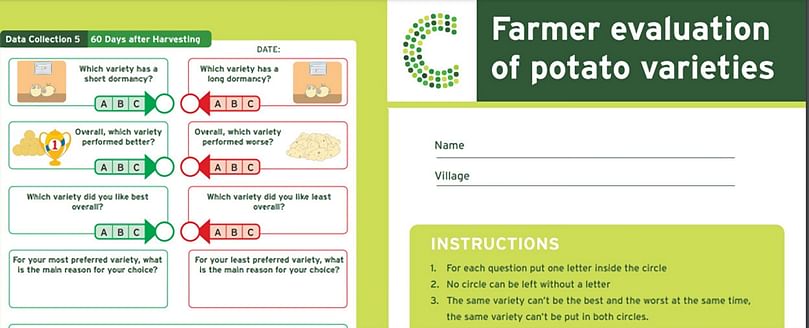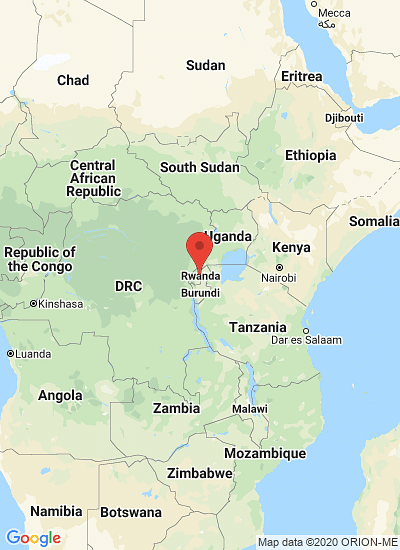An example of a tricot potato trial in Gicumbi, Rwanda. (Courtesy: JC Nshimiyimana / CIP)
Potato Farmers in Rwanda help validate and disseminate new varieties

The triadic comparisons of technologies â or tricot â approach is being used in a citizen-science project funded by the CGIAR Research Program on Roots, Tubers and Bananas (RTB) to identify and scale up best cassava and potato varieties in Rwanda.
The project is being implemented by the International Potato Center (CIP), the International Institute of Tropical Agriculture, the Alliance of CIAT and Bioversity International, the Rwanda Agriculture and Animal Resources Development Board (RAB) and One Acre Fund.
With the tricot approach, farmers are given packages of seeds of three anonymous varieties from a larger set of varieties tested in the community and beyond.
Farmers are trained to conduct a trial with the seeds and then, at the end of the season, they are asked which variety they consider âbestâ or âworstâ on several characteristics including yield, marketability, plant vigor, tuber appearance, and overall tuber quality.
This approach allows the team to identify highly-preferred potato varieties for different agroecological conditions in Rwanda. The data are then used to develop variety recommendations for different agroecologies across the country.
How it works
Selected farmers in different sectors of the target districts are trained on the tricot approach and how it can be implemented in the field. In this training, farmers are given a farmer guide and a crop characteristic booklet (Figure 1) to guide them in planting and data collection.

A crop characteristic booklet used by farmers in data collection
The crop characteristic booklet tells the farmers how and when to collect data and how to contact project staff to report data. That information is then fed into an online portal â âClimmobâ â for data analysis and report generation.
Tricot for potato in Rwanda
For potato, the tricot project has been implemented in seven districts of Rwanda representing the main potato agroecological zones of the country: Huye, Gicumbi, Ngororero, Nyabihu, Nyamagabe, Nyanza, and Nyaruguru.
230 trials were established using the tricot approach in the growing season that ran from September 2020 to January 2021. Preliminary results showed that the varieties Twihaze and Gisubizo were ranked by farmers as the best in terms of yield in Nyabihu district, while Kiru, Cruza and Seka were preferred, in that order, in Gicumbi and Nyamagabe.
In the next growing season (from March to July 2021), another 230 trials have been established in the same districts to validate and confirm the findings. The early data will show long-term impact.
Jean Claude Nshimiyimana, an agronomist at CIP:
"After knowing the preferred varieties by farmers in each of the district and developing variety recommendations based on these data, RAB will be requested to increase early generation seed of recommended varieties and make them available to seed multipliers for further multiplication and distribution to farmers in these districts for planting."Thiago Mendes, a lead potato breeder at CIP:
"Itâs an approach that can help optimize breeding programs to deliver new varieties that meet end-user preferences and increase farmersâ income."The tricot method is winning support from the researchers and extension agents involved with the project.
Rukundo Placide, a plant breeder with RAB:
"The approach ensures the togetherness of scientists and end-users including farmers in selecting best performant crop varieties. Any variety selected through this approach will require less effort for its dissemination, because farmers and other end-users have appreciated its performance, resulting in high adoption compared to a variety selected using the conventional approach."







